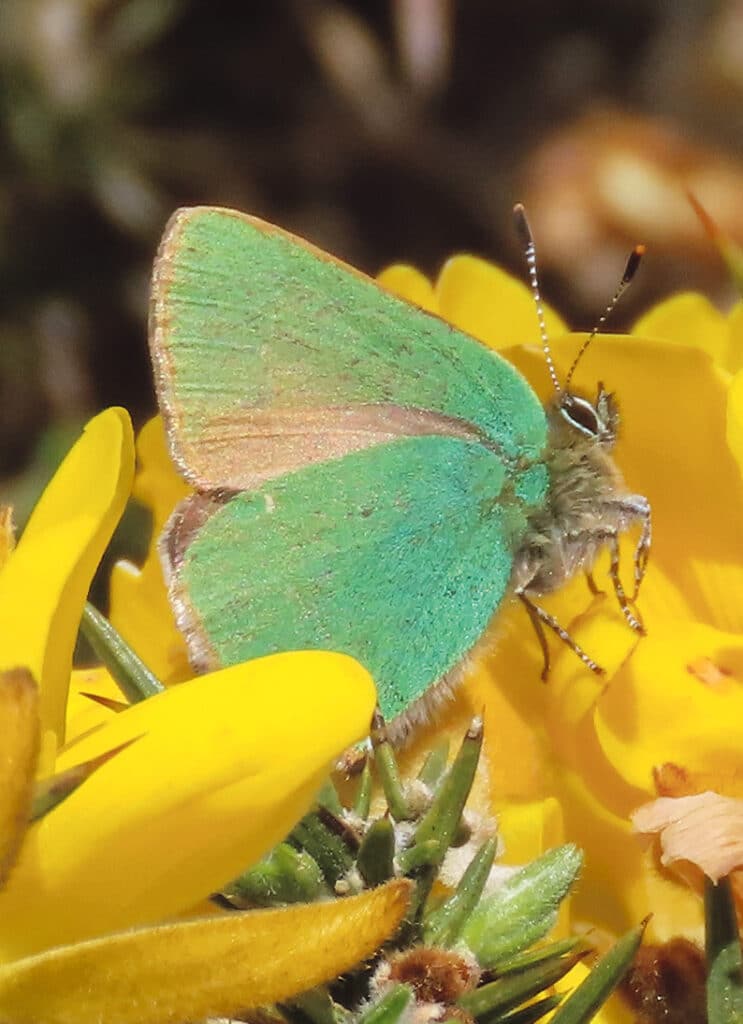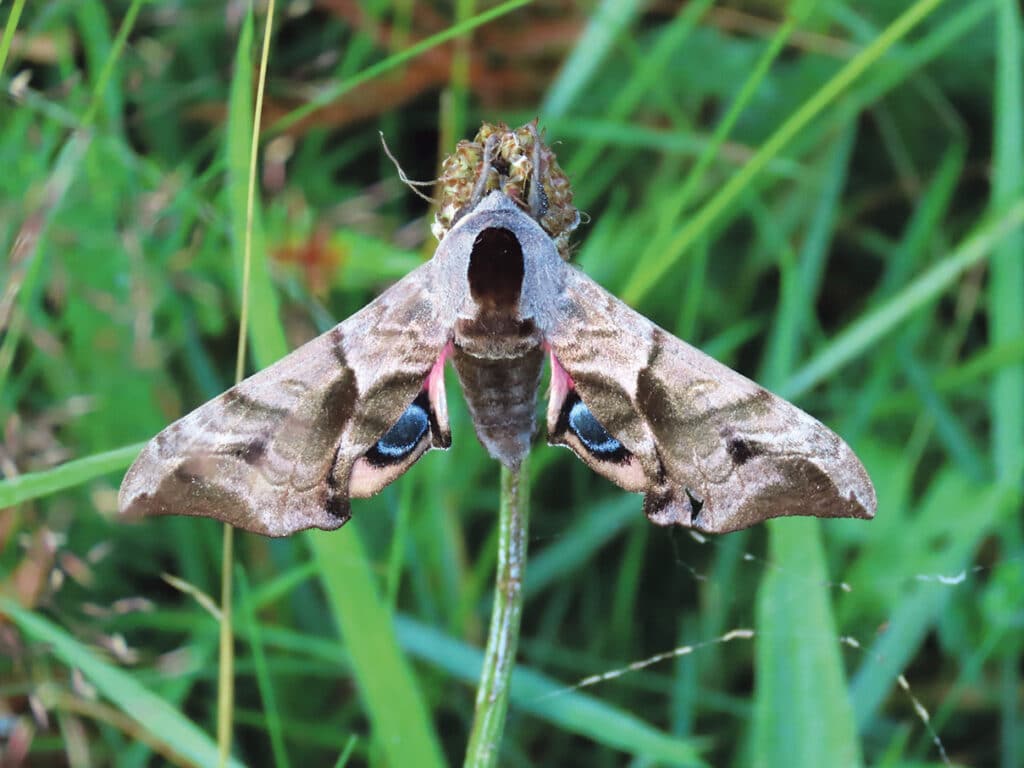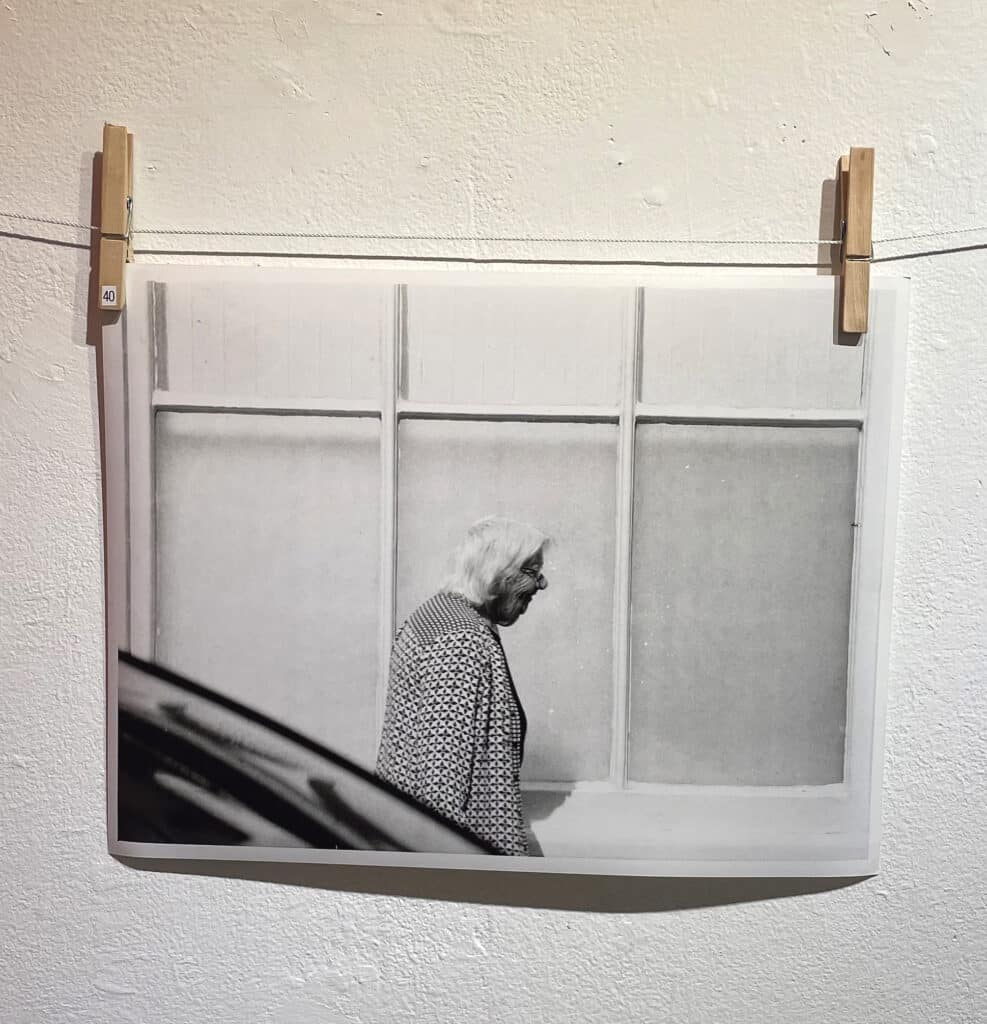Lisa Scarff has an eye for the wondrous nature that surrounds us and she captures it so well as Moze Jacobs finds out. “I have my camera with me at all times to record butterflies, moths, flowers, landscapes,” says Lisa. No better place than Sheep’s Head, overlooking Bantry Bay, where she lives.

Butterfly on gorse 
Eyed Hawk Moth
Many of Lisa’s photographs can be viewed online at www.wayfarercards.com. The images, virtually all from West Cork, are ‘real’ (she may crop but never edits) as well as fantastic. Stone circles, ancient castles, lighthouses, boats, seascapes, landscapes, wildlife, flowers. A selection are sold as photographic greeting cards at various outlets in western West Cork (see below).
This spring Lisa has a photographic exhibition in Nickie’s Kitchen in Schull (through May 20). It is called ‘Commeen Wildflower Meadows’ and focuses exclusively on the meadowlands at her home farm on the Sheep’s Head peninsula: A haven for wildlife. “As a child in the 1960s, making my way to school, I remember an abundance of grasses, herbs, and flowers visited by bees, butterflies and a host of other invertebrates, humming and fluttering. There are areas like the Burren, where you can still see a lot of traditional meadows. Here, there are only some remnants, mainly hugging the coasts or on the islands. The rest are mostly fields for feeding animals that are being ‘improved’; even the rock is broken to create more green fields for feeding animals, composed of a few strains of highly bred grasses that support little or no wildlife. Even the hedgerows seem to be absolutely decimated.”
Her aim with the exhibition is to raise awareness. “We are losing or have already lost so much natural beauty. Hopefully, I can inspire people to undo some of the damage.” Just as her own memories are prompting her to do the same in Commeen. “The idea has always been to increase the biodiversity by encouraging native perennial lowers and grasses associated with acid grassland. As these meadows have never been ‘improved’ using fertiliser, they are rich in wildflowers and traditional grasses. And I have two little ponies that are rotated around the meadows from late September through late March before being put out on the commonage on the hillside. They graze the meadows right down so the grass doesn’t get matted. Their hooves press any seeds into the ground, which helps to create little seed beds. Normally, they don’t need any input, such as hay. Digging three ponds also had amazing results for biodiversity: dragonflies, damselflies, frogs, newts. Plus, they sequester carbon.”
Many people around the Mizen Peninsula will know Lisa from Schull’s Roaring Water Health Store, which she owned for 15 years. It sells organic/local food, as well as sustainable household and craft products. Recently, it was taken over by Enda Fitzmaurice, who intends to continue in a similar vein. Although Lisa herself will not completely disappear from the scene. “I look forward to working one day a week for Enda while having more space in my life for family and adventures. Such as exploring the landscapes here in Ireland. I am particularly drawn to the offshore islands, where nature is often more abundant. Inishbofin, Clare Island, the Aran Islands, the local islands in Roaring Water Bay. And I am also doing some walks with a group of people in the Burren to look for butterflies that are specific for limestone landscapes.”
Lisa reckons there are 21 different butterfly species on her own land. Some are rare, such as the Small Heath, which was once widespread but has declined 77 per cent since 2008. It is classified as ‘near threatened’ under the Red List of Irish Butterflies. As is the Gatekeeper, also observed at Commeen. “I’m completely into butterflies,” she says. “There’s so much to learn about them and their food plants, life cycles. Three years ago, I started to do a regular weekly walk from April to late September for the National Biodiversity Data Centre, to which I submit my recordings along that route, which takes in a variety of landscape elements: woods, glades, rocky mountains, meadows, hedgerows. Different butterflies have their preferred habitats and you get to know those places. Speckled Wood is found in the woodland edge. There is a lovely old holly tree. Once it begins to flower, Holly Blues will be dancing as soon as the sun comes out. Some types of butterfly pair up with specific plants. I saw an Orange Tip today near the lady’s smock, or cuckooflower, which is its food plant. They coincide. The larvae may also need certain plants. Those of the Peacock butterfly like nettles.”
The National Biodiversity Data Centre collects information through its Citizen Science Portal, “in order to better understand and assist the protection of Ireland’s biodiversity”. Anyone can submit data (and pictures), even from their backyard, via records.biodiversityireland.ie. These will be added to maps with over six million records. It’s quite addictive, says Lisa. “In addition to the day-flying moths in the meadows, we are also trapping and recording moths of the night and have been astounded by their number and variety.”
As well as minding the meadows and its creatures, she has been nurturing the native woodland. This year I planted 50 trees – oak and birch and mountain ash. It’s hard work and can be challenging, as I am quite exposed to the southwest winds. The soil is poor so this has been a slow process, much helped by mulching and applying portions of pony poo. I am also using gorse as a nurse species. It fixes the nitrogen and protects the saplings from the wind.” Apart from aiding biodiversity, the native trees help reduce her energy bill. “A wood burner is my only source of heating. A lot of the logs come from branches that are cut when thinning takes place to let the light in. The percentage of firewood is increasing year on year as the trees mature. I use gorse as kindling. In times gone by, gorse was a valued crop. The young gorse shoots were used as fodder for animals or as bedding. Many farmers would have had a furze cutter.”
Wayfarer Cards are on sale in the Roaring Water Health Store (Schull), An Siopa Beag (Cape Clear), Deelish Garden Centre (Skibbereen), Future Forests Garden Centre (Kealkill), Hudson’s Wholefood (Ballydehob), Durrus Post Office, Dzogchen Beara (Allihies), and Bantry Bookshop.
The National Biodiversity Data Centre website at biodiversityireland.ie offers numerous practical tips for increasing biodiversity, among others through wildflower meadows and ponds.


